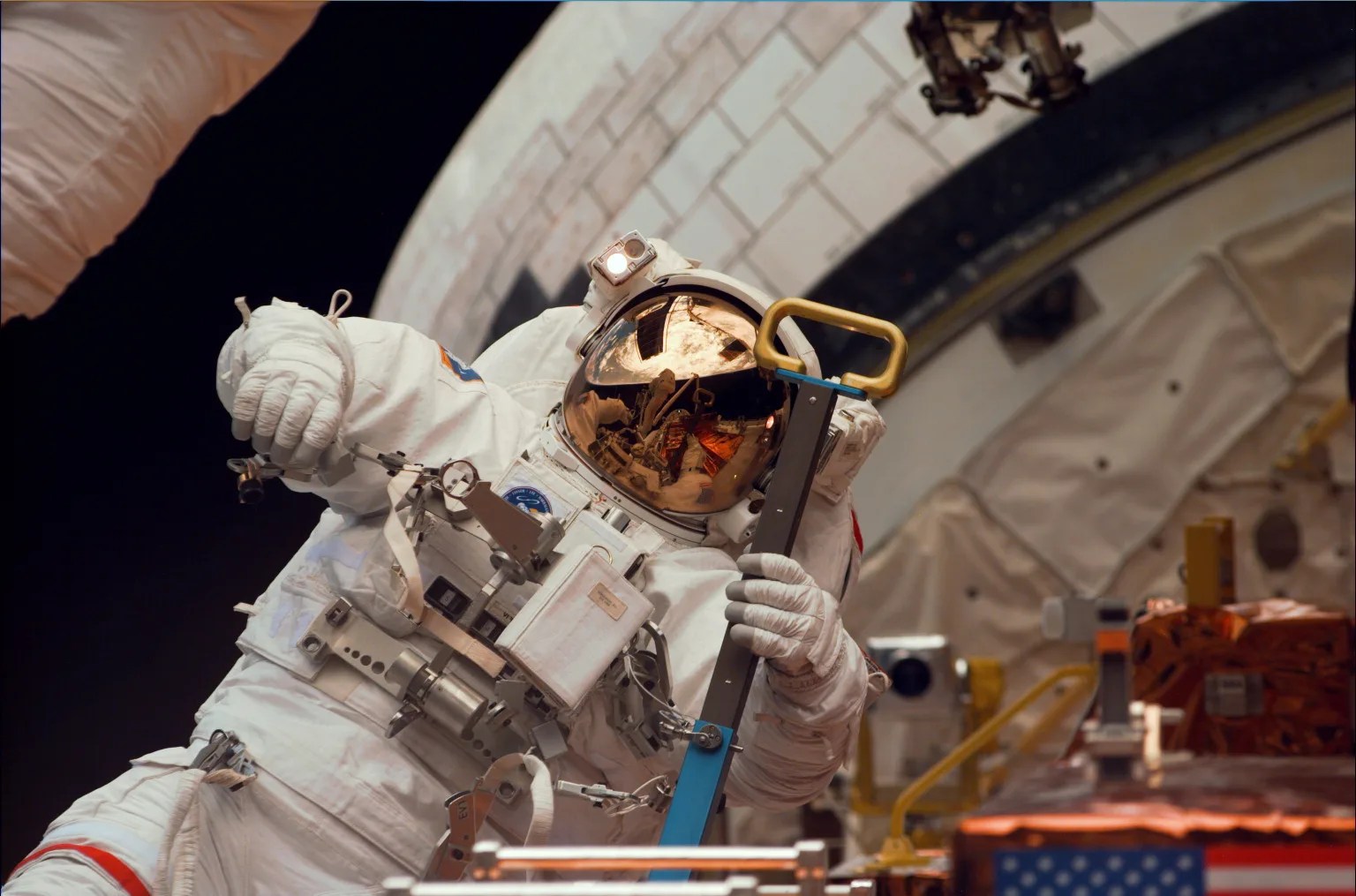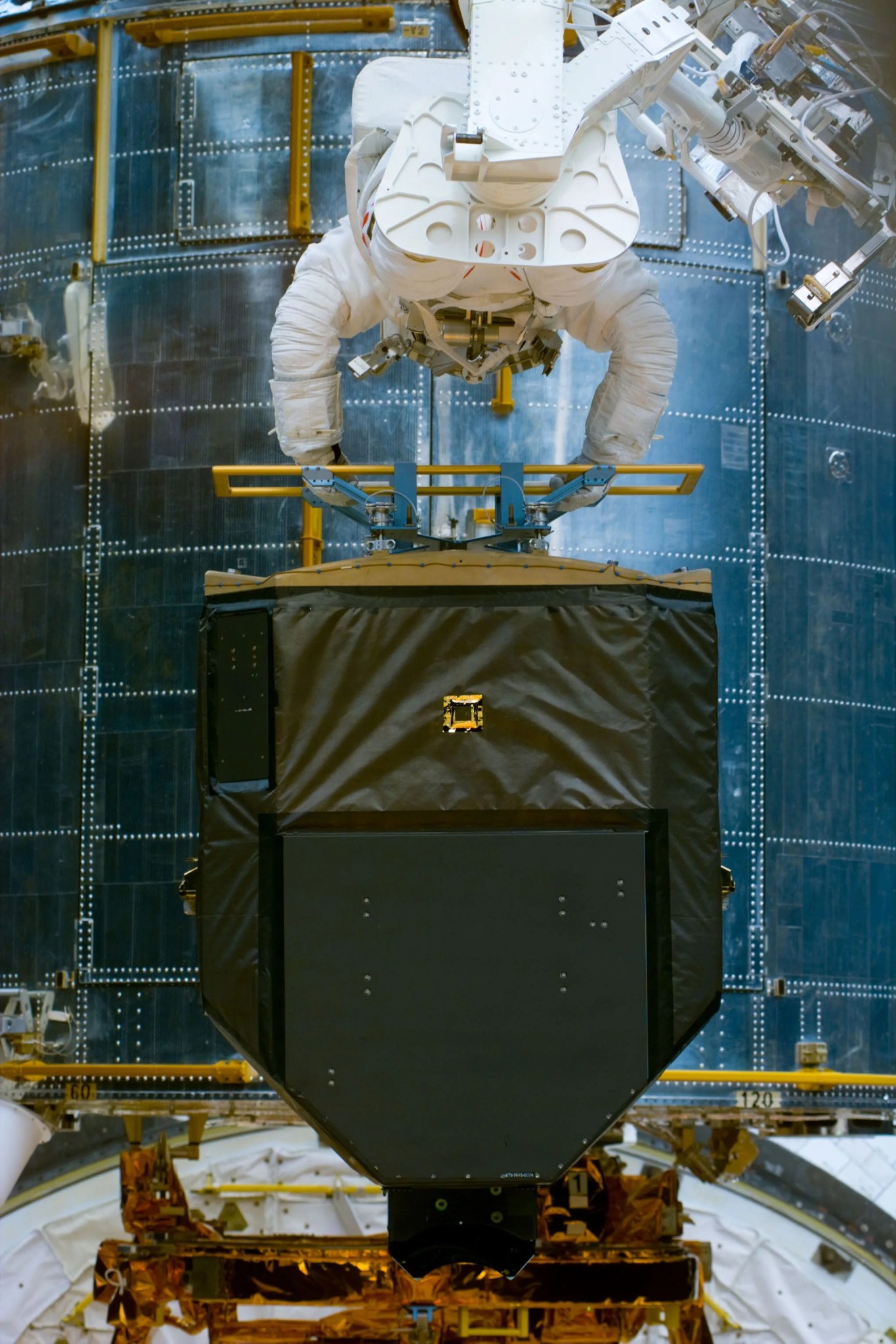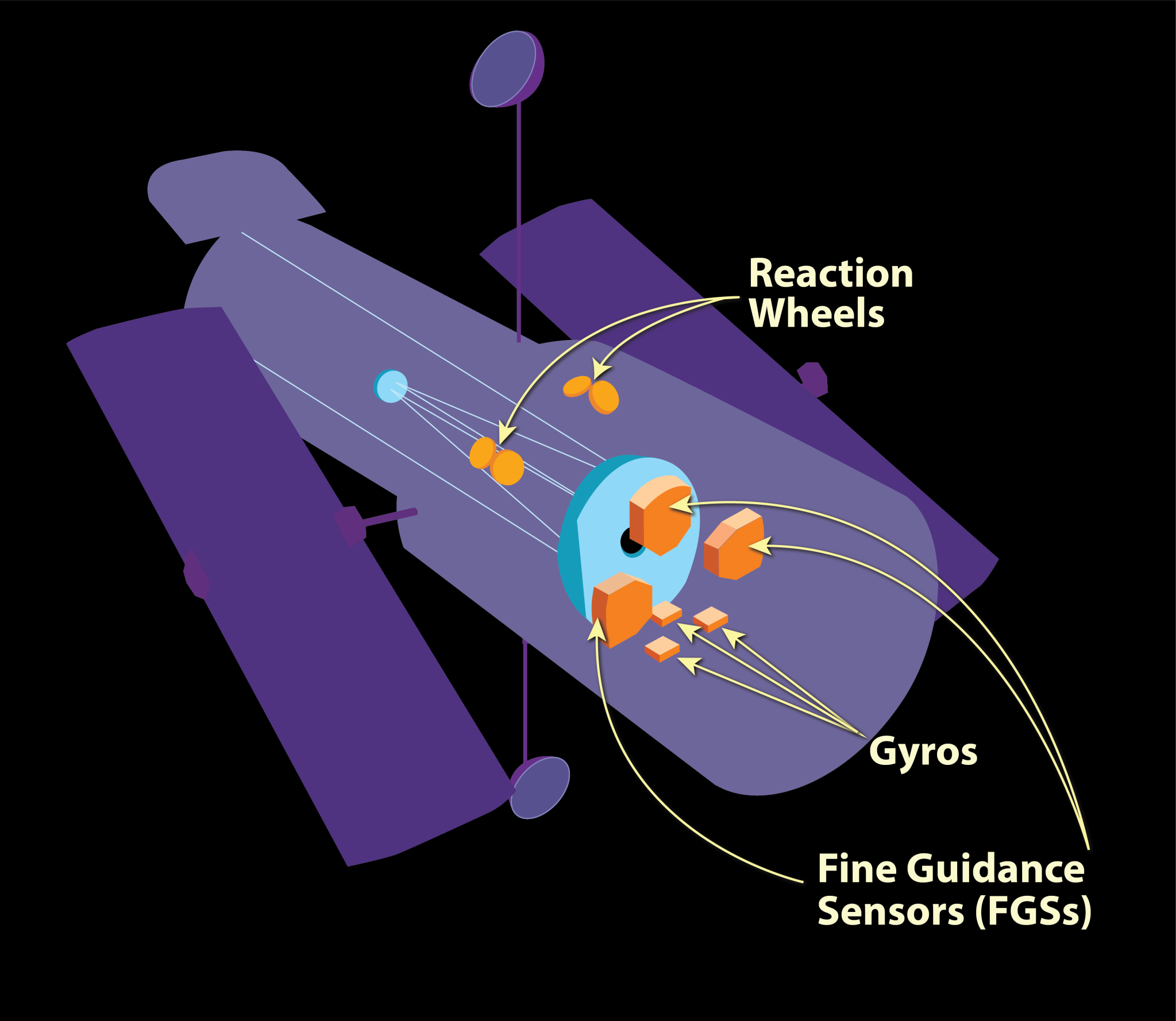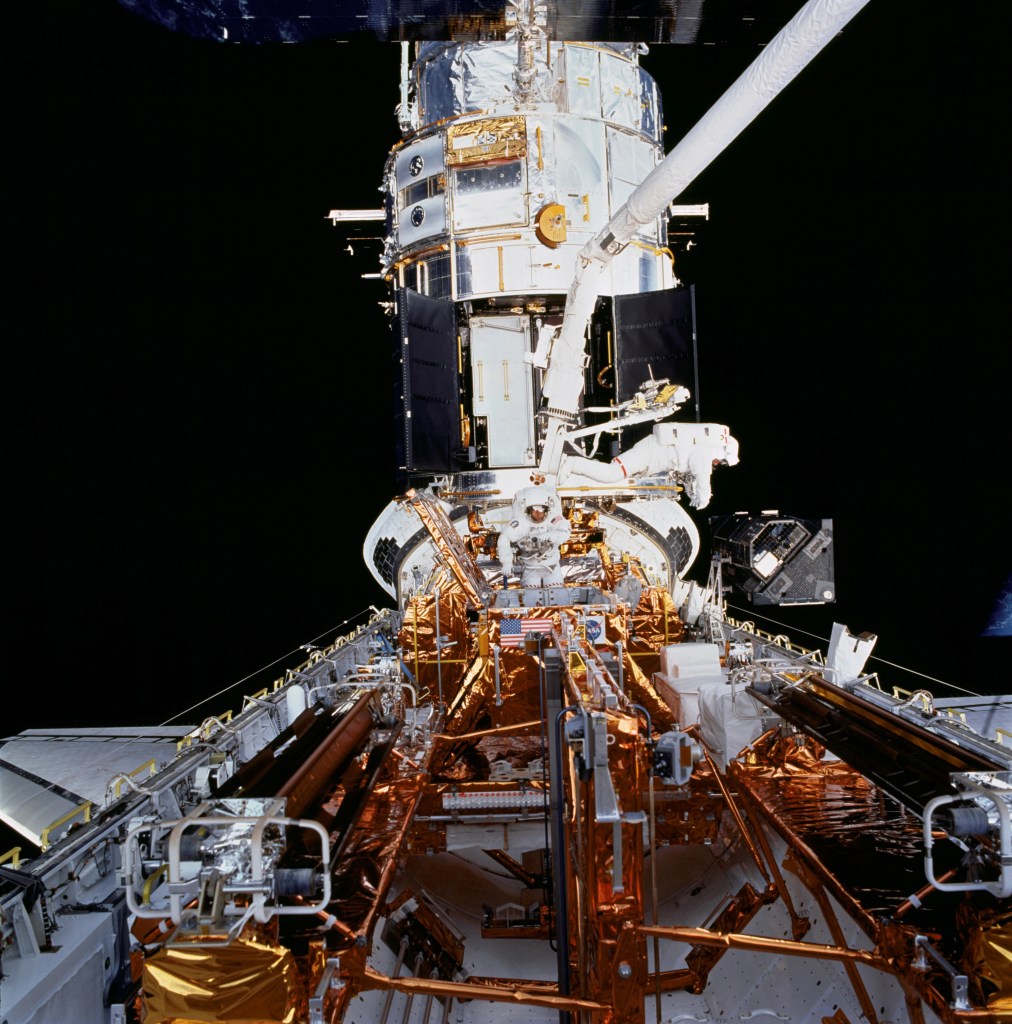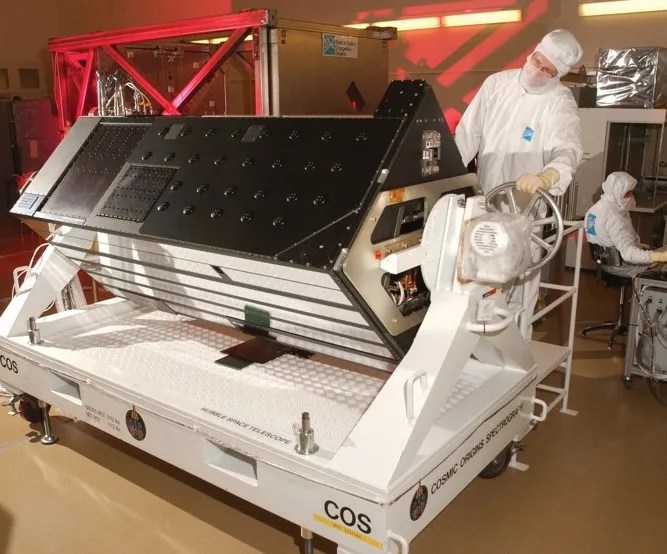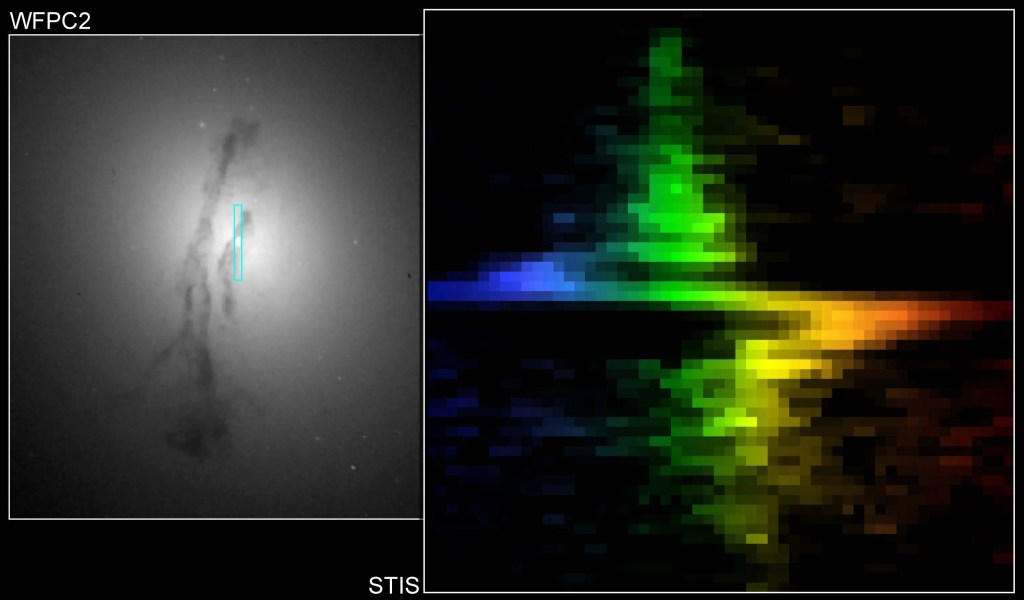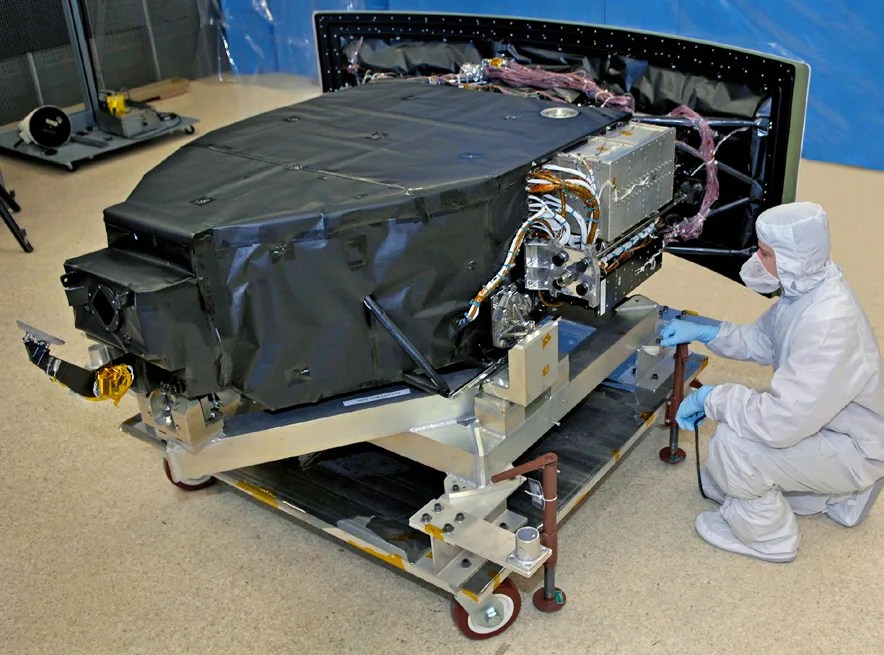Design
Fine Guidance Sensors
For the Hubble Space Telescope to perform as the premier astronomical observatory of our time, the telescope must precisely point and stabilize its gaze on the sky so that its scientific instruments can collect images or spectra of astronomical objects.
The spacecraft’s Pointing Control System relies upon Fine Guidance Sensors to accurately measure the position of guide stars and thereby detect and correct unwanted drifts of the telescope from its desired pointing.
Launched into Earth orbit in 1990, the Hubble Space Telescope has three Fine Guidance Sensors (FGSs). Subsequently, two of the FGSs were replaced by refurbished sensors during servicing missions. The third FGS is the original sensor.
Overview
The FGSs provide pointing information for the spacecraft and can also function as a scientific instrument to perform celestial measurements. Two of the three sensors are required to point the telescope at an astronomical target and then hold that target steady in a scientific instrument’s field of view. These sensors lock onto “guide stars” and measure the position of the telescope relative to the object being studied. Regular adjustments based on these minute measurements keep Hubble pointed precisely in the right direction. The third FGS is available to operate as a scientific instrument. The FGSs are capable of precisely measuring the relative positions of stars, detecting rapid changes in a star’s brightness, and resolving double-star systems that appear as point sources even to Hubble’s cameras. The FGSs can provide star positions that are about 10 times more precise than those observed from a ground-based telescope.
The Instrument
The three FGSs are located at 90-degree intervals around the circumference of the telescope. (The fourth quadrant is occupied by the Wide Field Camera 3 instrument.) Each sensor measures 5.4 feet long and 3.3 feet wide, and weighs 485 pounds. Each FGS is an interferometer that uses a pair of prisms to detect small angular changes of a guide star’s position, which corresponds to a change of the telescope’s pointing.
Unlike the other Hubble science instruments, the FGSs do not have pixel-based detectors. Instead, light from the guide star is measured using photomultiplier tubes (PMTs). To search for and track stars, the FGSs cover a total field of view of about 69 square arcminutes. However, each FGS only views a small, 5-square-arcsecond patch of sky at a given time to pinpoint the guide star. Light from this chosen patch of sky is brought to the PMTs by a pair of mirror assemblies (the star selectors), which are mounted on shafts that can be rotated to the proper position.
The sensors detect when the telescope drifts even a miniscule amount and alert the Pointing Control System to return the telescope to its target. This gives Hubble the ability to remain pointed at that target with no more than 0.007 arcsecond of deviation over at least 24 hours. This level of stability and precision is like being able to hold a laser beam focused on Franklin D. Roosevelt’s head on a dime roughly 200 miles away, about the distance between New York City and Washington, D.C.
Mission Science Discoveries
Measuring the Distances to Important Objects — Astronomers used an FGS to measure the distance to the Pleiades star cluster, an important reference star cluster to which all other star clusters are compared. The FGS measurement resolved a discrepancy between traditional distance measurements and the distance measured by the Hipparcos satellite, which had indicated the cluster was significantly closer and thus the stars intrinsically fainter than otherwise expected.
An FGS also measured the precise distances to Cepheid and RR Lyrae variable stars, which provided a fundamental calibration of the cosmic distance scale. Accurate measurements to nearby stars are crucial to obtaining precise distances to faraway objects. Distances to other types of stars, including dying, sun-like stars called planetary nebulae, also have been measured by the FGSs. One notable distance measurement was to HD 140283, dubbed the “Methuselah star.” Astronomers used the distance measurement to calibrate the star’s properties and determine that the star is the oldest known star.
Studying Planets around Other Stars — After astronomers discovered the first extrasolar planets in the 1990s, they began using the FGSs to detect the motion of a star in response to the gravitational pull of an unseen planet. Such astrometry measurements can be used to calculate a more accurate mass for extrasolar planets. As software and analysis techniques became more sophisticated, the FGSs could even be used to study systems with more than one planet.
Hubble’s FGSs also made the first precise measurement of an extrasolar planet’s mass using astrometry. An FGS measured the small “side-to-side” wobble of the red dwarf star Gliese 876 due to the tug of an unseen companion object, named Gliese 876b. By measuring that slight motion, astronomers calculated its mass to be between 1.89 and 2.40 times greater than Jupiter’s mass.
Hubble has studied the light of stars (photometry) to measure extrasolar planetary systems. In one case, the FGSs detected a planet by measuring the slight decrease in light from a star as the unseen planet crossed in front of it. The Kepler mission employs this same transit technique to detect planets. In another case, the FGSs studied the star HD 17156, known to host a transiting planet. By making precision measurements over 10 days, astronomers could study small pulsations (asteroseismology) to determine the density of the star, and thereby its mass, radius and age.
Studying Double-Star Systems — FGS measurements have discovered binary systems composed of two stellar relics called white dwarfs, and subsequently determined the masses of the white dwarfs in these systems. Astronomers have used the FGSs to determine the relationship between mass and brightness of very low-mass stars, which are the Milky Way galaxy’s most common type of star.
On the other extreme, the FGSs have been used to study the galaxy’s most massive stars. The observations have provided crucial information to fill in the gap between massive double-star systems discovered by direct imaging, which have wide separations and long orbital periods, and those detected by spectroscopy, which have short orbital periods and small angular separations. The study helped astronomers conclude that almost all massive stars reside in double-star systems, which offers important implications for the formation of these hefty stars.
Servicing Mission 2
The mission extended the range of wavelengths Hubble can see and increased its efficiency and performance. Also included was the replacement of a Fine Guidance Sensor.
Learn More about Servicing Mission 2